Scenario Planning to Address Critical Uncertainties for Robust and Resilient Water–Wastewater Infrastructures under Conditions of Water Scarcity and Rapid Development
Abstract
:1. Introduction
1.1. Context
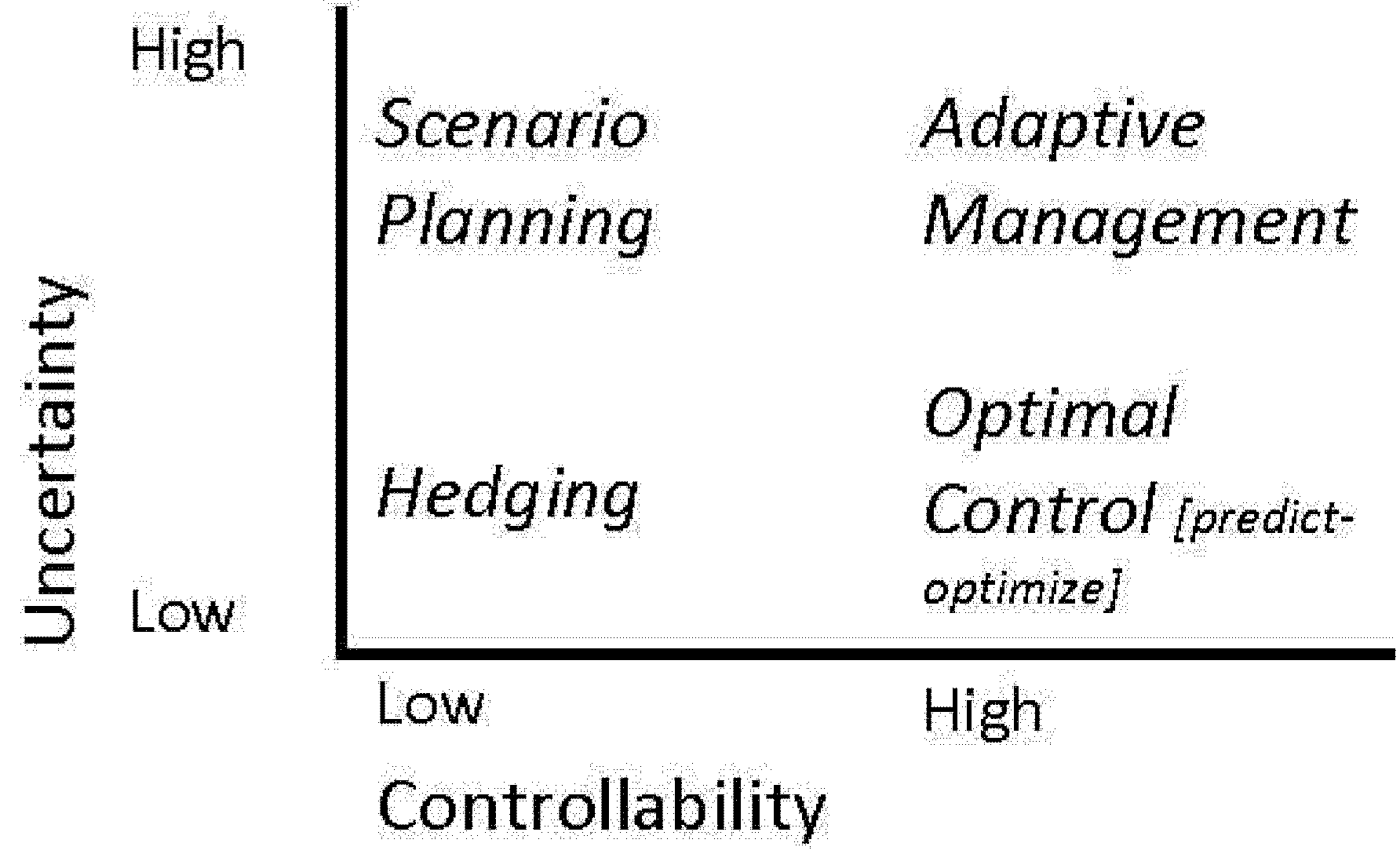
1.2. The EFRI-RESIN Project
1.3. Sustainability, Robustness and Resilience
2. Water in Tucson, Pima County, Arizona
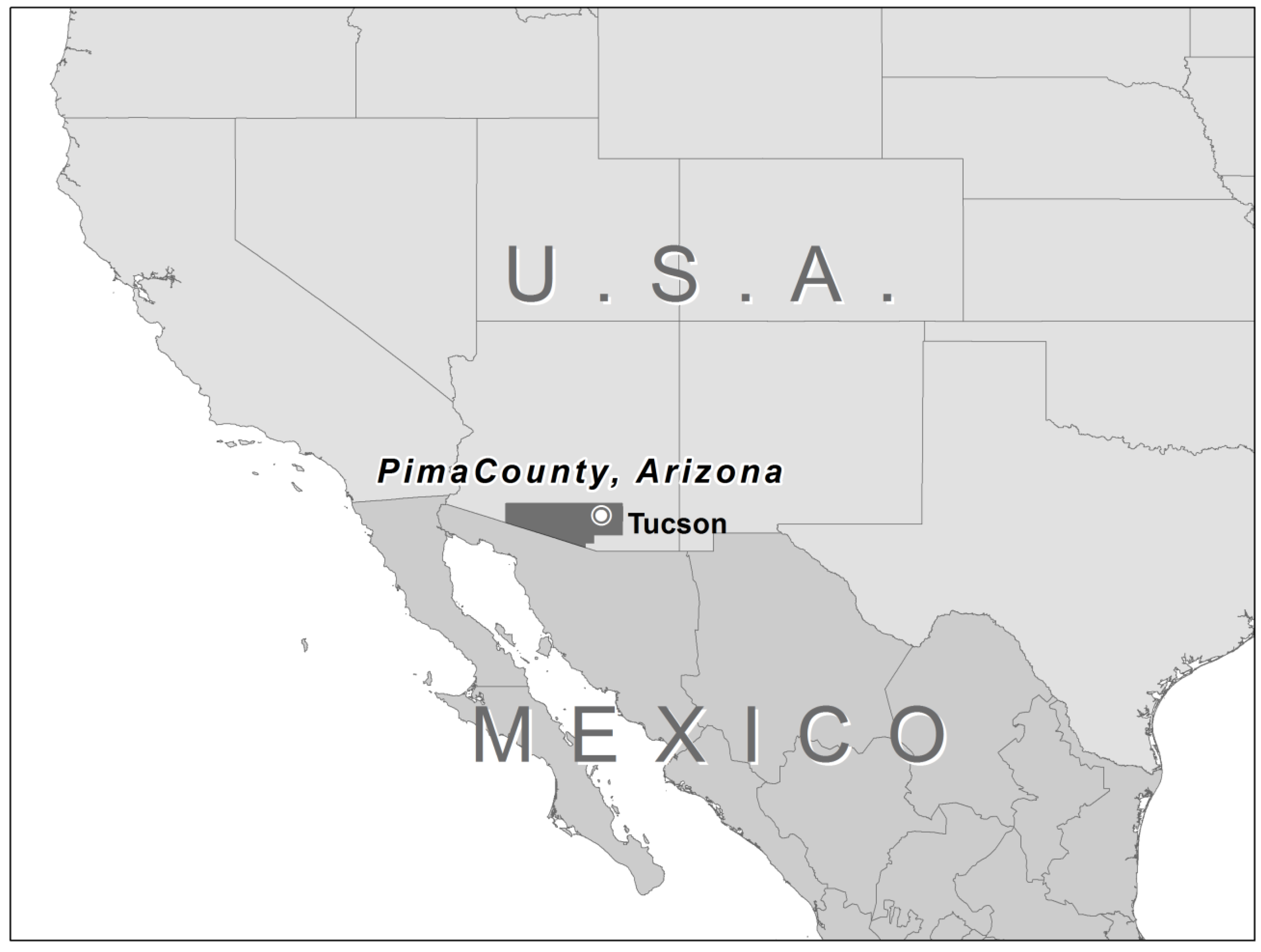
3. Initiating Scenario Planning
| Code | Demand-based forces |
| D1–D2 | Total water demand—population density & residential demand |
| D3 | Future commercial & industrial demand |
| D4 | Potential user: Rosemont Mine (proposed copper mine on edge of planning area) |
| D5 | Potential user: Tucson Electric Power (water for electricity generation) |
| D6 | Outdoor water demand (varies by housing type, swimming pools, vegetation, etc.) |
| D7 | Outdoor reclaimed water use |
| D8 | Water loss in potable distribution systems (loss and unaccounted water) |
| D9 | Water loss in reclaimed distribution system (loss & unaccounted water if dual distribution systems) |
| Code | Supply-based forces |
| S1 | Existing water supplies (legally available groundwater, CAP, effluent/reclaimed water) |
| S2–S6 | Potentially available supply—water transfers, importation, desalination, stormwater, Native water leases |
| S7 | Wastewater recovery (share of water returned)/ potential effluent supply (reclaimed water budget) |
| S8 | Spatial unavailability of “banked water” (Central Arizona Groundwater Replenishment District) |
| Code | Cost-based forces |
| C1 | Cost per gallon to acquire and produce potable water |
| C2 | Cost per gallon to produce reclaimed water |
| C3 | Wastewater collection and treatment |
| Code | Perception-based forces |
| P1 | Public opinion acceptability of decentralized wastewater treatment plants and facility siting |
| P2 | Publically desired water quality or risk perceptions |
| P3 | Public opinion of type of reclaimed water uses with dual distribution system |
| P4 | Public adoption of reclaimed water for residential outdoor (dual distribution system) |
| P5 | Public acceptance of reclaimed water for fire flow (dual distribution system) |
| P6 | Public acceptance/adoption of direct potable reuse (DPR) (single distribution system) |
| P7 | Public adoption of indirect potable reuse (IPR) (public acceptance and willingness to pay) |
| P8 | Water recovery rate/potential effluent supply (due to household level greywater & rainwater systems) |
| P9 | Environmental uses for reclaimed water (in-stream flows) |
| P10 | Outdoor greywater use and length (period) of adoption |
| P11 | Outdoor rainwater catchment/adoption |
| P12 | Willingness to pay to treat to high quality potable water |
| P13 | Willingness to pay for new potable water supplies |
| P14 | Willingness to pay for reclaimed water (e.g., reclaimed water by end-use water quality/class of effluent) |
| Code | (Physical)-engineering based forces |
| E1 | Ability to recharge reclaimed water supplies (e.g., physical location of recharge facilities) |
| E2 | Ability to recharge surface/future water supplies (e.g., depth to bedrock) |
| E3 | Ability to recharge stormwater |
| E4 | Ability to desalinate |
| Code | Institutional-political based forces |
| I1 | Planning and implementation uncertainties (City/County rights, jurisdictional issues & coordination) |
| I2 | Water providers |
| I3 | Potable water rates |
| I4 | Sewer rates (wastewater) |
| I5 | Reclaimed water rates |
| I6 | Conservation rules, ordinances, regulation, incentives for water (rainwater, greywater, stormwater) |
| I7 | Costs/rate subsidy for low-income residents |
| I8 | Utility level drought plans |
| I9 | Transfer of development rights across jurisdictions |
| I10 | Federal, state or local rules, ordinances, regulation, incentives for land (land use, zoning, planning) |
| I11 | State Lands release (sale for revenue), planning, and disposition (timing of release, which parcels) |
| Code | Macro forces in the larger environment |
| M1 | Population timing variability (rate of economic and population growth, vacancies) |
| M2 | Long-term population (when might it stabilize, and at what level?) |
| M3 | Supply uncertainty due to local drought |
| M4–M5 | Supply uncertainty—regional drought, Colorado River water sharing, climate change |
| M6 | Bond ratings of City or Tucson and Pima County |
| M7 | Infrastructure cost (finance, discount rate for timing of construction) |
| M8 | Federal institutional and legislative changes |
| M9 | State institutional and legislative changes |
| M10 | Existing water rights changes (surface, groundwater, reclaimed water rights) |
4. Ranking Driving Forces
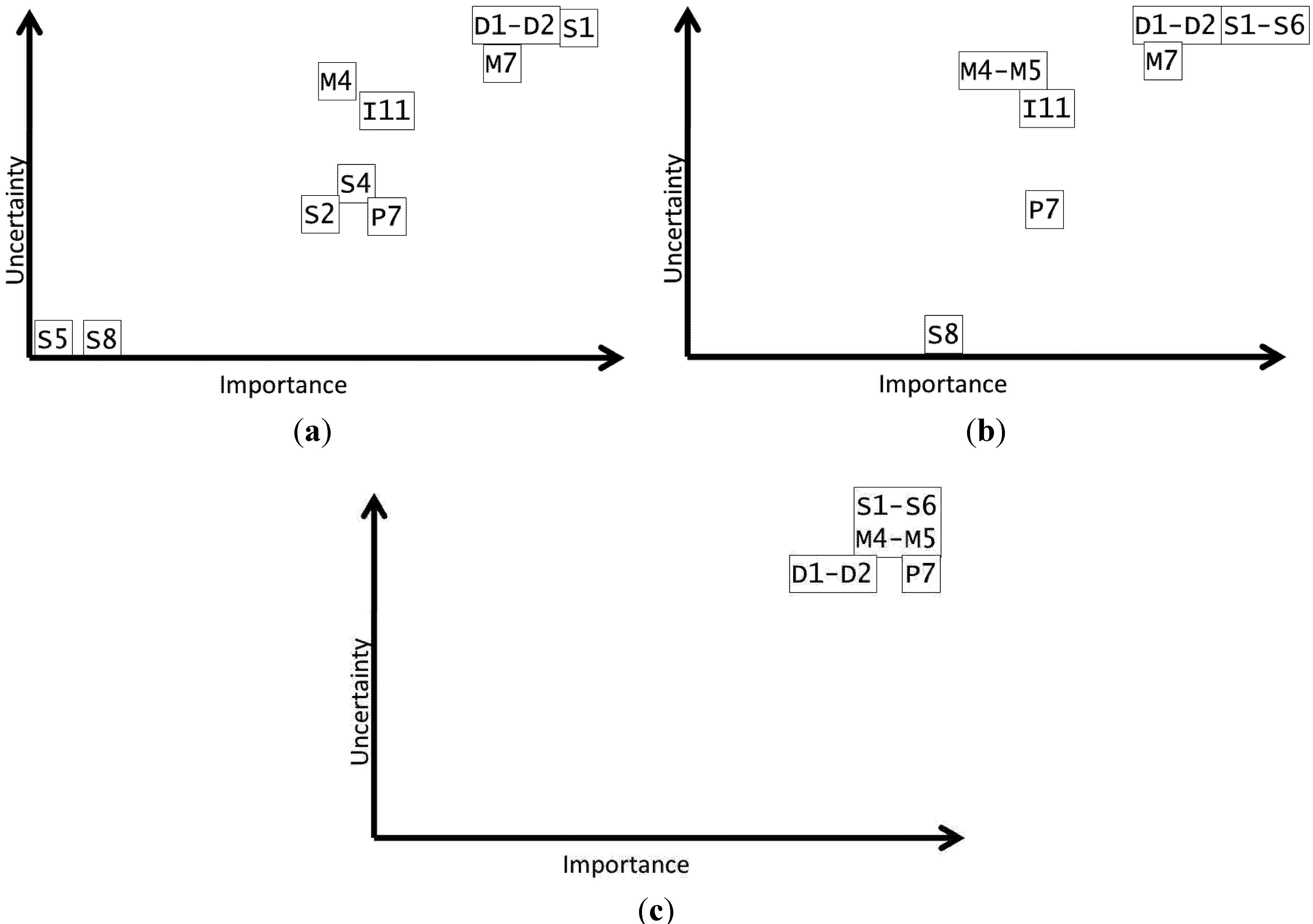
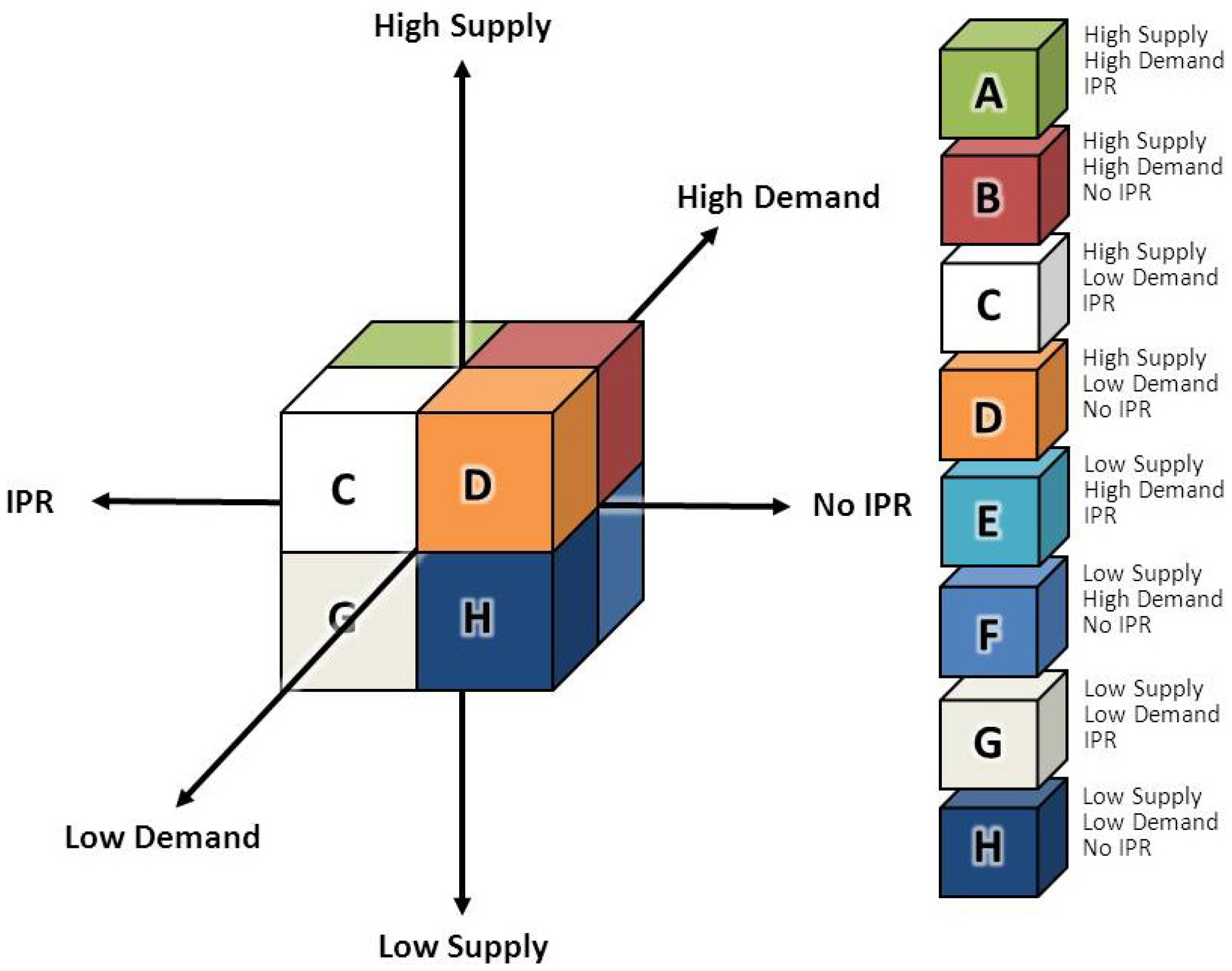
5. Scenarios and Driving Forces
5.1. Supply Based Drivers
5.2. Perception Based Drivers
5.3. Demand Based Drivers
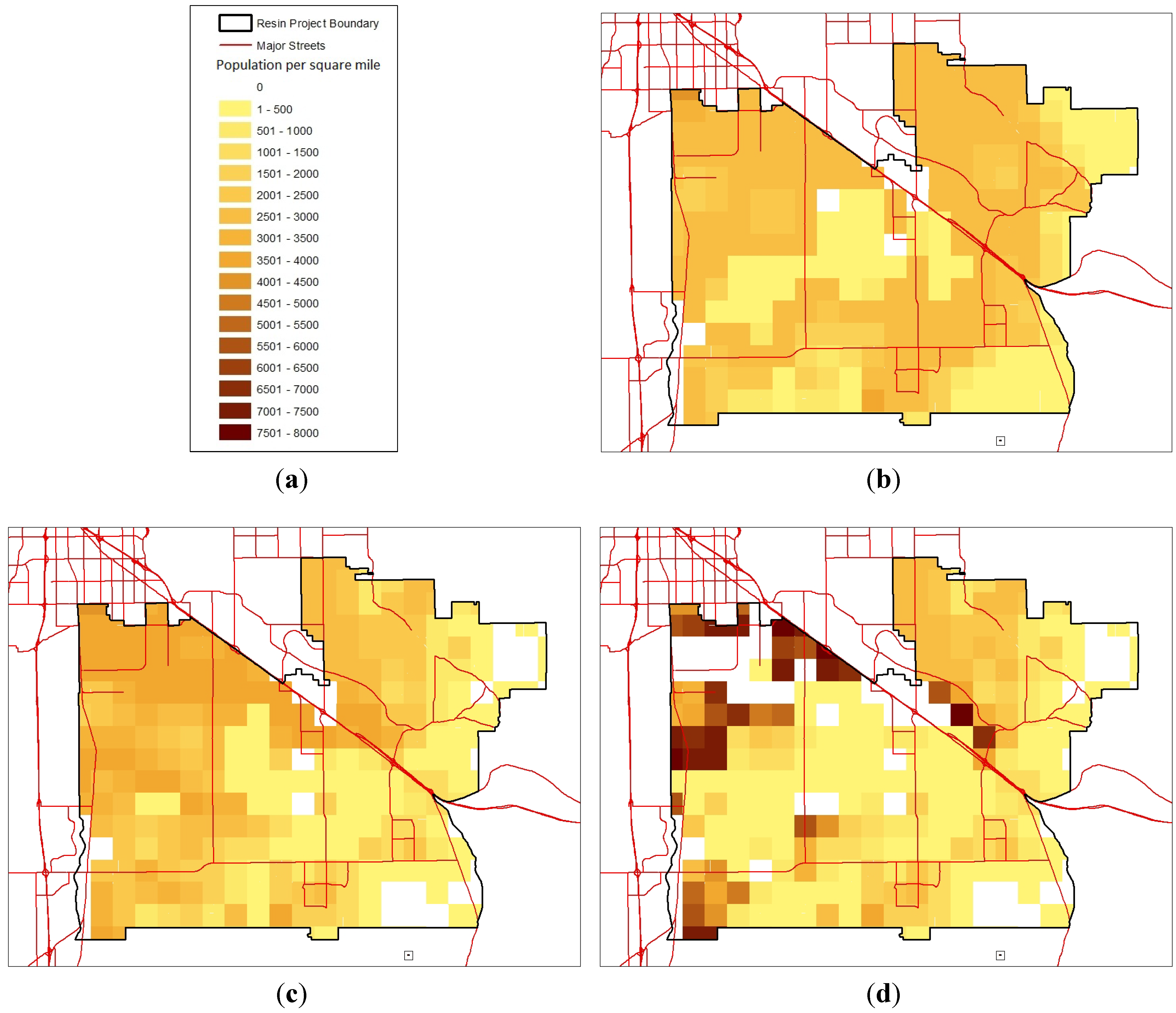
6. Discussion
7. Conclusions
Acknowledgments
References and Notes
- UN-Water. In Global Analysis and Assessment of Sanitation and Drinking-Water (GLAAS); World Health Organization: Geneva, Switzerland, 2010.
- Milly, P.C.D.; Betancourt, J.; Falkenmark, M.; Hirsch, R.M.; Kundzewicz, Z.W.; Lettenmaier, D.P.; Stouffer, R.J. Stationarity is dead: Whither water management? Science 2008, 319, 573–574. [Google Scholar]
- Browning-Aiken, A.; Ormerod, K.J.; Scott, C.A. Testing the climate for non-potable water reuse: Opportunities and challenges in water-scarce urban growth corridors. J. Environ. Policy Plan. 2011, 13, 253–275. [Google Scholar] [CrossRef]
- Schwartz, P. The Art of the Long View: Planning for the Future in an Uncertain World; Doubleday: New York, NY, USA, 1996. [Google Scholar]
- Garfin, G.; Varady, R.G.; Romero-Lankao, P. Rethinking integrated assessments and management projects in the Americas. Environ. Sci. Policy. 2012. Available online: http://www.sciencedirect.com/science/article/pii/S1462901111002000 (accessed on 1 November 2012). [CrossRef]
- Peterson, G.D.; Cumming, G.S.; Carpenter, S.R. Scenario Planning: A tool for conservation in an uncertain world. Conserv. Biol. 2003, 17, 358–366. [Google Scholar] [CrossRef]
- Van der Heijden, K. Scenarios: The Art of Strategic Conversation; Wiley: Chichester, UK, 1996. [Google Scholar]
- Kok, K.; van Vliet, M.; Bärlund, I.; Dubel, A.; Sendzimir, J. Combining participative backcasting and exploratory scenario development: Experiences from the SCENES project. Technol. Forecast. Soc. Chang. 2011, 78, 835–851. [Google Scholar] [CrossRef]
- Gleeson, T.; Alley, W.M.; Allen, D.M.; Sophocleous, M.A.; Zhou, Y.; Taniguchi, M.; VanderSteen, J. Towards sustainable groundwater use: Setting long-term goals, backcasting, and managing adaptively. Ground Water 2012, 50, 19–26. [Google Scholar] [CrossRef]
- Pahl-Wostl, C.; Sendzimir, J.; Jeffrey, P.; Aerts, J.; Berkamp, G.; Cross, K. Managing change toward adaptive water management through social learning. Ecol. Soc. 2007, 12, 30:1–30:18. [Google Scholar]
- Sellers, J. Information needs for water resources decision-making. Nat. Resour. Forum 1993, 17, 228–234. [Google Scholar] [CrossRef]
- Marra, R.; Thomure, T. Scenario Planning: Making strategic decisions in uncertain times. Southwest Hydrol. 2009, 3, 22–23, 32. [Google Scholar]
- Lansey, K. Sustainable, Robust, Resilient Water Distribution Systems. In Proceedings of the 14th Water Distribution Systems Analysis Symposium, Adelaide, Australia, 24-27 September 2012.
- Population Growth by Decade. Pima Association of Governments: Tucson, AZ, USA. Available online: https://www.pagnet.org/RegionalData/Demographics/PopulationGrowthbyDecade/tabid/123/Default.aspx (accessed on 27 August 2012).
- The acre-foot (equivalent to 1233.48 cubic meters) is the standard measure of water volume used in the Western U.S. In order for this paper to be useful for international and U.S. readers we report volumes in both million cubic meters and acre-feet.
- Coles, A.R.; Scott, C.A. Vulnerability and adaptation to climate change and variability in semi-arid rural southeastern Arizona, USA. Nat. Resour. Forum 2009, 33, 297–309. [Google Scholar] [CrossRef]
- Ormerod, K.J.; Scott, C.A. Drinking wastewater: Public trust in potable reuse. Sci. Technol. Hum. Values. 2012. Available online: http://sth.sagepub.com/content/early/2012/04/23/0162243912444736.abstract (accessed on 29 June 2012). [CrossRef]
- Goeminne, G.; Mutombo, E. The Field of Scenarios: Fuzziness as a Chance for Building Appealing Future Visions; Working paper for the CONSENTSUS project; Centrum voor Duurzame Ontwikkeling, Universiteit Gent: Brussels, Belgium; Centre d'études du développement durable, Université Libre de Bruxelles: Brussels, Belgium, 2007. Available online: http://www.belspo.be/belspo/ssd/science/Reports/A3_Goeminne_Mutombo_The%20field%20of%20scenarios_WP2_CDO_ULB.pdf (accessed on 27 August 2012).
- Gammage, G.; Stigler, M.; Clark-Johnson, S.; Daugherty, D.; Hart, W. Watering the Sun Corridor: Managing Choices in Arizona’s Megapolitan Area; Morrison Institute for Public Policy: Phoenix, AZ, USA, 2011. [Google Scholar]
- Lead Hydrologist. Personal communication, Tucson Water: Tucson, AZ, USA, 2012.
- ADD Water is an ongoing stakeholder process aimed at identifying new water supplies for water users within the Central Arizona Water Conservation District’s (CAWCD) three-county service area as well as for outlying areas. The CAWCD operates and manages the CAP and also provides groundwater replenishment services under the Central Arizona Groundwater Replenishment District. For further details, see Homepage http://www.projectaddwater.com.
- Colby, B.G.; Jacobs, K.L. Arizona Water Policy: Management Innovations in an Urbanizing, Arid Region; RFF Press: Washington, DC, USA, 2007. [Google Scholar]
- Po, M.; Kaercher, J.D.; Nancarrow, B.E. Literature Review of Factors Influencing Public Perceptions of Water Reuse; Commonwealth Scientific & Industrial Research Organisation (CSIRO) Report 54; CSIRO Land and Water: Black Mountain, Australia, 2003. [Google Scholar]
- Scott, C.A.; Browning-Aiken, A.; Ormerod, K.J.; Varady, R.G.; Mogollon, C.D.; Tessmer, C. Guidance on Links between Water Reclamation and Reuse and Regional Growth; WateReuse Research Foundation Report 06-016-1; WateReuse Research Foundation: Arlington, VA, USA, 2011. [Google Scholar]
- Campbell, A.; Scott, C.A. Water reuse: Policy implications of a decade of residential reclaimed water use in Tucson, Arizona. Water Int. 2011, 36, 908–923. [Google Scholar] [CrossRef]
- Water Plan: 2000–2050. City of Tucson Water Department’s Planning and Engineering Division: Tucson, AZ, USA, 2004. Available online: http://cms3.tucsonaz.gov/water/waterplan (accessed on 19 June 2012).
- Macpherson, L.; Snyder, S. Water Reuse Public Acceptance: Context Matters (webinar). In WateReuse Research Foundation Webcast Series; WateReuse: Alexandria, VA, USA, 2012; Webcast recorded on14 June 2012. [Google Scholar]
- Asano, T. Urban water recycling. Water Sci. Technol. 2005, 51, 83–89. [Google Scholar]
- Logan, M. Fighting Sprawl and City Hall: Resistance to Urban Growth in the Southwest; University of Arizona Press: Tucson, AZ, USA, 1995. [Google Scholar]
- City of Tucson, Department of Urban Planning and Design. Houghton Area Master Plan. 2005. Available online: http://www.tucsonaz.gov/planning/plans/all/hamp.pdf (accessed 20 June 2012).
- Pima County Development Services. Conservation Lands System Regional Plan Policy. 2005. Available online: http://www.pimaxpress.com/Documents/Planning/ComprehensivePlan/PDF/CLS/CLS_Adopted_Policy.pdf (accessed 20 June 2012).
- Stantec Consulting Inc. Lee Moore Wash Basin Management Study: Summary Report; Stantec Consulting Inc.: Tucson, Arizona, U.S.A, 2009. Available online: http://rfcd.pima.gov/largefiles/reports/leemoore/leemoore_final_summary_report_0916_2009.pdf (accessed 20 June 2012).
- Location of Growth, Urban Form, and Cost of Infrastructure: A White Paper Supporting Phase 2 of the Water and Wastewater Infrastructure, Supply and Planning Study. 2005. Available online: http://www.tucsonpimawaterstudy.com/Reports/Phase2/White_paper_6.14.09.pdf (accessed 19 June 2012).
- Clark, R.M.; Sivaganesan, M.; Selvakumar, A.; and Sethi, V. Cost models for water supply distribution systems. J. Water Resour. Plan. Manag. 2002, 128, 312–321. [Google Scholar] [CrossRef]
© 2012 by the authors; licensee MDPI, Basel, Switzerland. This article is an open-access article distributed under the terms and conditions of the Creative Commons Attribution license (http://creativecommons.org/licenses/by/3.0/).
Share and Cite
Scott, C.A.; Bailey, C.J.; Marra, R.P.; Woods, G.J.; Ormerod, K.J.; Lansey, K. Scenario Planning to Address Critical Uncertainties for Robust and Resilient Water–Wastewater Infrastructures under Conditions of Water Scarcity and Rapid Development. Water 2012, 4, 848-868. https://doi.org/10.3390/w4040848
Scott CA, Bailey CJ, Marra RP, Woods GJ, Ormerod KJ, Lansey K. Scenario Planning to Address Critical Uncertainties for Robust and Resilient Water–Wastewater Infrastructures under Conditions of Water Scarcity and Rapid Development. Water. 2012; 4(4):848-868. https://doi.org/10.3390/w4040848
Chicago/Turabian StyleScott, Christopher A., Christopher J. Bailey, Ralph P. Marra, Gwendolyn J. Woods, Kerri Jean Ormerod, and Kevin Lansey. 2012. "Scenario Planning to Address Critical Uncertainties for Robust and Resilient Water–Wastewater Infrastructures under Conditions of Water Scarcity and Rapid Development" Water 4, no. 4: 848-868. https://doi.org/10.3390/w4040848
APA StyleScott, C. A., Bailey, C. J., Marra, R. P., Woods, G. J., Ormerod, K. J., & Lansey, K. (2012). Scenario Planning to Address Critical Uncertainties for Robust and Resilient Water–Wastewater Infrastructures under Conditions of Water Scarcity and Rapid Development. Water, 4(4), 848-868. https://doi.org/10.3390/w4040848




